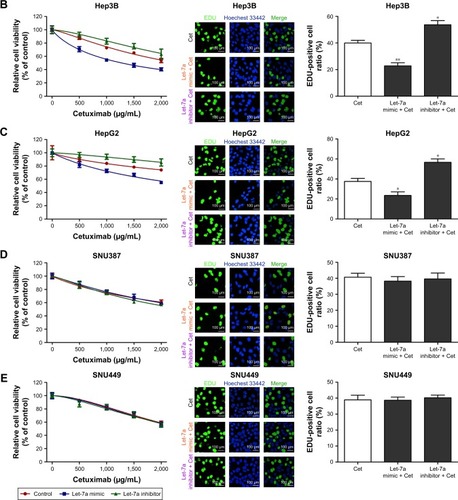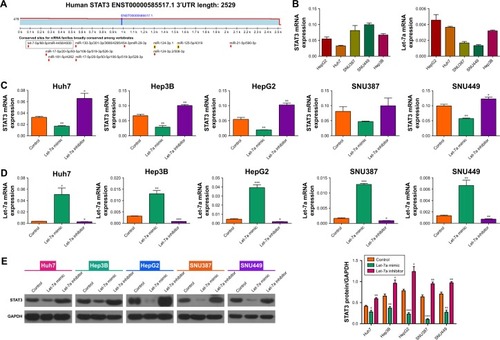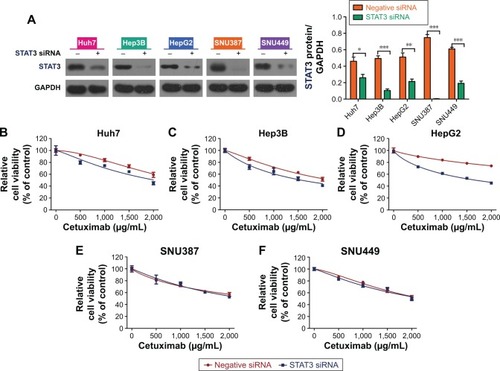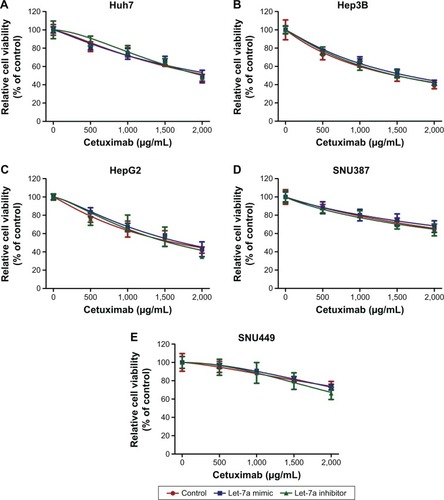Figures & data
Figure 1 Let-7a can enhance the sensitivity of HCC cells with epithelial phenotypes to cetuximab.
Abbreviations: CCK-8, Cell Counting Kit-8; Cet, cetuximab; IC50, half maximal inhibitory concentration; HCC, hepatocellular carcinoma.


Table 1 IC50 values for cetuximab in HCC cell lines with or without let-7a mimic or let-7a inhibitor treatment
Figure 2 Let-7a negatively regulates the expression of STAT3.
Abbreviations: HCC, hepatocellular carcinoma; miRNA, microRNA; mRNA, messenger RNA; STAT3, signal transducer and activator of transcription 3.

Figure 3 Suppression of STAT3 could enhance the sensitivity of epithelial phenotype HCC cells to cetuximab.
Abbreviations: CCK-8, Cell Counting Kit-8; GAPDH, glyceraldehyde 3-phosphate dehydrogenase; HCC, hepatocellular carcinoma; siRNA, small interfering RNA; STAT3, signal transducer and activator of transcription 3.

Table 2 IC50 values for cetuximab in HCC cell lines with negative siRNA plus cetuximab treatment or cetuximab plus STAT3 siRNA treatment
Figure 4 The role of let-7a on increasing the sensitivity of HCC cells to cetuximab is impaired after STAT3 suppression.
Abbreviations: CCK-8, cell counting kit-8; HCC, hepatocellular carcinoma; STAT3, signal transducer and activator of transcription 3.

